Pfalzgraf (count palatine) was a noble title in the Holy Roman Empire. The most famous of these are the counts palatine of the Rhine, who ruled the Electoral Palatinate.
Pfalzgraf is also the surname of the following people:

The House of Wittelsbach is a former Bavarian dynasty, with branches that have ruled over territories including the Electorate of Bavaria, the Electoral Palatinate, the Electorate of Cologne, Holland, Zeeland, Sweden, Denmark, Norway, Hungary, Bohemia, and Greece. Their ancestral lands of Bavaria and the Palatinate were prince-electorates, and the family had three of its members elected emperors and kings of the Holy Roman Empire. They ruled over the Kingdom of Bavaria which was created in 1805 and continued to exist until 1918.
A count palatine, also count of the palace or palsgrave, was originally an official attached to a royal or imperial palace or household and later a nobleman of a rank above that of an ordinary count. The title originated in the Late Roman Empire. In the Middle Ages especially and into modern times, it is associated with the Holy Roman Empire, especially Electoral Palatinate.

Count is a historical title of nobility in certain European countries, varying in relative status, generally of middling rank in the hierarchy of nobility. Especially in earlier medieval periods the term often implied not only a certain status, but also that the count had specific responsibilities or offices. The etymologically related English term "county" denoted the territories associated with some countships, but not all.
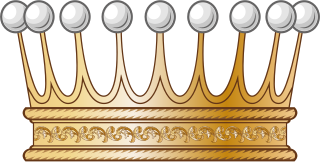
Graf is a historical title of the German nobility and later also of the Russian nobility, usually translated as "count". Considered to be intermediate among noble ranks, the title is often treated as equivalent to the British title of "earl".

Landgrave was a rank of nobility used in the Holy Roman Empire, and its former territories. The German titles of Landgraf, Markgraf ("margrave"), and Pfalzgraf are of roughly equal rank, subordinate to Herzog ("duke"), and superior to the rank of a Graf ("count").
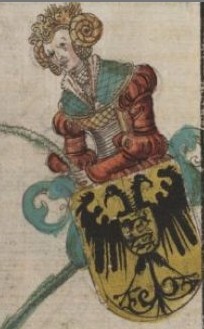
Margaret of Sicily was a Princess of Sicily and Germany, and a member of the House of Hohenstaufen. By marriage she was Landgravine of Thuringia and Countess Palatine of Saxony.
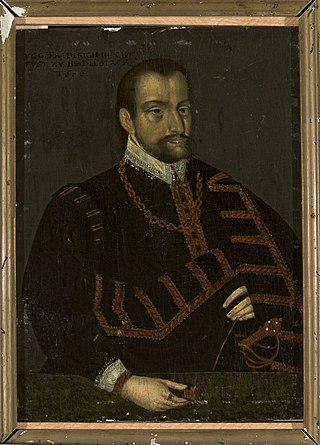
Frederick IV, Elector Palatine of the Rhine, only surviving son of Louis VI, Elector Palatine and Elisabeth of Hesse, called "Frederick the Righteous".

Stephen of Simmern-Zweibrücken was Count Palatine of Simmern and Zweibrücken from 1410 until his death in 1459.

Louis I of Zweibrücken was Count Palatine and Duke of Zweibrücken and Count of Veldenz from 1444 until his death in 1489.

Alexander of Zweibrücken was Count Palatine, Duke of Zweibrücken and Count of Veldenz in 1489–1514.

Louis II of Zweibrücken was Count Palatine and Duke of Zweibrücken from 1514 to 1532.
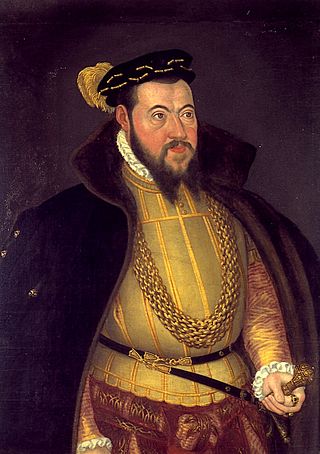
Count Palatine Wolfgang of Zweibrücken was member of the Wittelsbach family of the Counts Palatine and Duke of Zweibrücken from 1532. With the support of his regent, his uncle Rupert, Wolfgang introduced the Reformation to Zweibrücken in 1537.

John I of Zweibrücken was Count Palatine and Duke of Zweibrücken during 1569–1604.
Conrad of Hohenstaufen was the first hereditary Count Palatine of the Rhine.
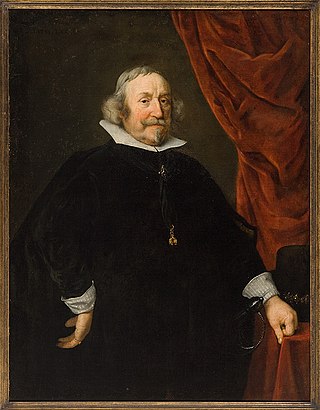
Wolfgang Wilhelm von Pfalz-Neuburg was a German Prince. He was Count Palatine of Neuburg and Duke of Jülich and Berg.

Christian IV, Count Palatine of Zweibrücken-Birkenfeld was Duke of Zweibrücken from 1735 to 1775.

Joseph Charles, Hereditary Prince of Sulzbach was the eldest son of Theodore Eustace, Count Palatine of Sulzbach.

Ruprecht, Count Palatine of the Rhine, was the third son of Philip, Elector Palatine of the House of Wittelsbach and he was Bishop of Freising from 1495 to 1498.
A Grafschaft was originally the name given to the administrative area in the Holy Roman Empire over which a count, or Graf, presided as judge. It is often, therefore, translated as 'county'. The term has survived as a placename in German-speaking countries, for example, in Germany and in Switzerland.
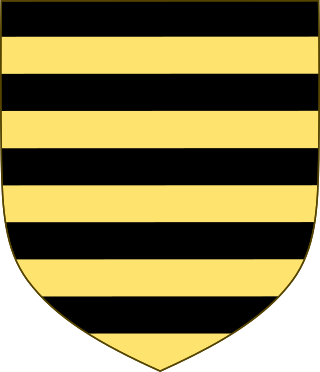
Siegfried I of Ballenstedt, was the son of Adalbert II of Ballenstedt, and a member of the House of Ascania. He was count palatine of the Rhineland (r.1095/7-1113), and count of Weimar-Orlamünde (r.1112-1113).